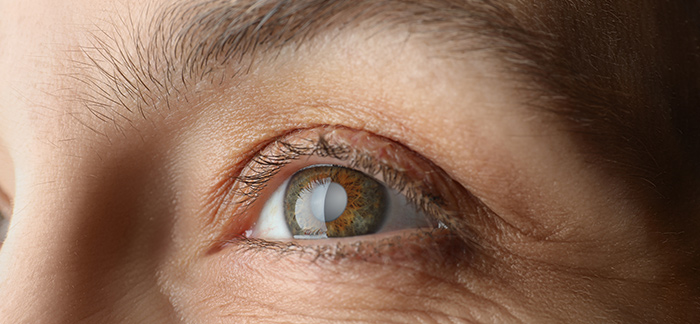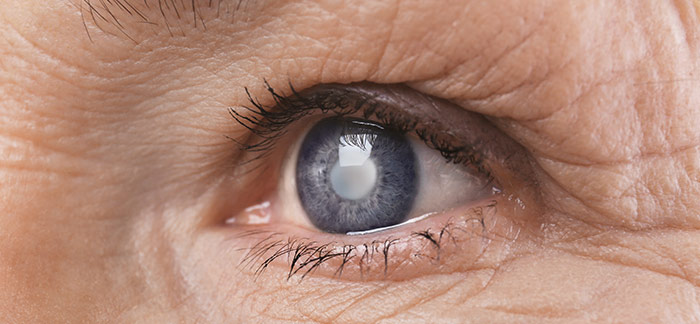
Cataracts cause clouded vision, like you’re peering through a dirty, misted-up or frosty windscreen. Things start looking blurry, hazy, dimmer, or duller and driving becomes challenging, especially at night.
It’s surprising how little most people know about this fairly common condition. With greater insight and regular eye examinations you can reduce your cataract risk and improve your eye health.
1. Aging isn’t the only cataract cause

As you age, your cataract risk increases. After 40, your eye lens proteins begin breaking down and clumping together. This creates a cataract, experienced as a lingering cloudy area on your lens. Over time, cataracts worsen, clouding more of your vision.
After 60, you’re more likely to notice cataract symptoms, but people of all ages can develop cataracts. Different cataract types exist based on where and how they develop in your eye.
Other factors accelerating cataract formation include:
- excessive exposure to UV ray
- heavy alcohol consumption
- long-term use of steroids and other medication
- obesity
- overproduction of oxidant
- radiation therapy, e.g. as cancer treatment and X-ray
- smoking
- some diseases, e.g. diabetes and glaucoma can cause secondary cataract
- trauma, e.g. eye injury (cataracts can sometimes only occur a few years later)
You’re also more susceptible if you have high blood pressure, previous eye injuries, inflammation, or surgery, or a family history of cataracts.
2. Cataracts develop slowly and painlessly

You might be unaware of a cataract. Initially, it can only affect part of your eye’s lens without disturbing your eyesight. Most cataracts start small, develop slowly and only restrict your vision as they grow.
Cataracts can occur in one or both eyes, but not usually simultaneously and they don’t spread between your eyes. They aren’t typically painful, but discomfort occurs as your eyes become more light-sensitive.
Later symptoms of cataracts include:
- blurry vision
- double vision in your affected eye
- frequent changing of prescription spectacles or contact lense
- increased glare sensitivity
- increased need for brighter light for activities, e.g. reading
- poor night vision
- seeing colours as dull, faded, or yellow
- seeing halos surrounding light
3. Surgery can help

Discuss any vision changes or concerns with your optometrist. They may suggest you first try stronger lighting, new spectacles, contact lenses, a magnifying glass, or lens, or even anti-glare sunglasses. You may be referred to an ophthalmologist for additional tests and treatment.
Surgery might not be necessary initially, but it’s the only effective cataract elimination, especially if your vision is affecting your usual activities or interfering with treating other eye problems. Cataract removal surgery is often easier if done early.
The procedure is generally extremely safe and successful. You’re normally awake, but won’t feel anything. It doesn’t exceed one hour, and you’ll go home shortly afterward. You’ll probably wear a patch on your other eye to help strengthen the recovering eye, and heal within eight weeks. You may get prescription eye drops and an artificial lens, contact lenses, or spectacles.
4. You can help reduce your cataract risk

If left untreated, cataracts can worsen over time and interfere with your daily activities, like driving, reading, working, and even result in total blindness. Cataracts don’t decrease on their own, but some stop growing. To help reduce your cataract risk:
- eat plenty of antioxidant-rich fruits and vegetables (e.g. blueberries, broccoli, spinach, carrots, and potatoes)
- have regular eye examination
- schedule frequent health check-ups, especially for diabetes or other medical condition
- keep a healthy weight
- stop smoking
- wear sunglasses outside as protection from UVB ray
Adults should have eye check-ups every two years until age 60 and ideally annually thereafter. Regular eye examinations help detect cataracts and other possible eye problems early.
If you notice any vision changes or sudden and noticeable differences, such as eye pain, headaches, flashes of light or seeing double, help is available immediately. Prioritise your eyesight and overall quality of life and book a check-up at your nearest Spec-Savers branch today.
Date Published: 29 August 2022
